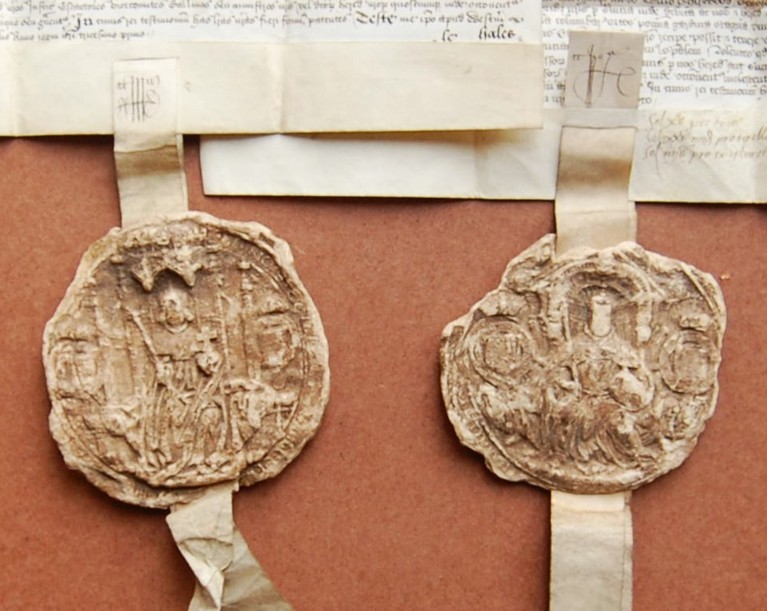Blog
27 November 2024
H is for … Henry VIII

Given that Emmanuel College was not founded until 1584, any connection with Henry VIII might be thought somewhat tenuous. Yet Emmanuel owes both its existence and its location to the events of Henry’s reign. The momentous break with Rome ultimately allowed Protestant reformers to flourish, including Emmanuel’s founder, Sir Walter Mildmay, who would later possess the zeal (and money) to foster the dissemination of the new faith. Furthermore, had Henry VIII not authorised the Dissolution of the Monasteries in the 1530s, the premises occupied by the Dominican order in Cambridge would not have come onto the open market, and later been acquired as the site of Mildmay’s new college. The college archives contain two royal charters sanctioning the sale of confiscated monastic property. These deeds, known as licences to alienate, bear the ‘Great Seal’ of Henry VIII. The earlier one, dated 1540 (above left) relates to an estate in Eltisley, Cambridgeshire, formerly owned by the nunnery of Hinchingbrooke. This property was later acquired by Emmanuel, but the grantee in 1540 was ‘Richard Williams alias Crumwell’, nephew of Thomas Cromwell, Henry VIII’s chief minister. The grant was sealed a few days before Cromwell was created Earl of Essex, a title he did not enjoy for long. The other licence to alienate (above right), dated 2 March 1545, authorises the sale of the Dominican premises in Cambridge, later home to Emmanuel College. A comparison of the two seals shows that a new matrix had been created during the intervening period. Designed in 1542 by Morgan Phillips alias Wolfe, the king’s goldsmith, the new seal reflected - somewhat belatedly - the changes that had taken place in the king’s appearance, including the style of his robes, his hair (shorter) and his weight (much heavier).
H is for … Hobson
.jpg)
The phrase Hobson’s choice, meaning ‘take it or leave it’, is still in popular use, centuries after it was coined. It alludes to Thomas Hobson, a wealthy Cambridge carrier and livery-stable owner, who hired out his horses in strict rotation, regardless of a client’s preference. Hobson is mentioned several times in our college accounts. In 1588 he was retrospectively paid for transporting pewter and other chattels from London, doubtless in connection with Emmanuel’s December 1587 dedication feast. The cartage included a payment of 16s 6d ‘for carrying the parlor table waying 500 & a half’. Later in the same year Hobson supplied the college with three horses, ‘one to goe upp, th’other to come down’ (but what about the third?), at a cost of 5s per horse. Soon afterwards he delivered ‘D[r] Fulks book’ to the college, doubtless one of several volumes by William Fulke listed in an early library inventory. In 1590 Hobson was entrusted with ‘bringing downe O[u]r founders picture hampiers 4 with books & other things unpaid for waying ten hundredth. xxiii s 4d’. This was shortly after the death in London of Sir Walter Mildmay, and the hampers may well have included the founder’s bequests to Emmanuel of plate and money. Thomas Hobson was active in, and a financial supporter of, various Cambridge civic enterprises. In 1606 our accounts record a payment of £3 10s ‘To the vicechanslar for bringing the river through the towne’. This was the college’s contribution to the costs of the proposed scheme to bring clean water from Nine Wells to Cambridge, via a new aqueduct known to posterity as Hobson’s Conduit. In 1631, the year of Hobson’s death, a branch channel from the conduit was cut across what is now Chapman’s Garden. This watercourse was originally a straight, narrow channel (pictured), but was later widened and given a curved shape.
Amanda Goode, College Archivist
